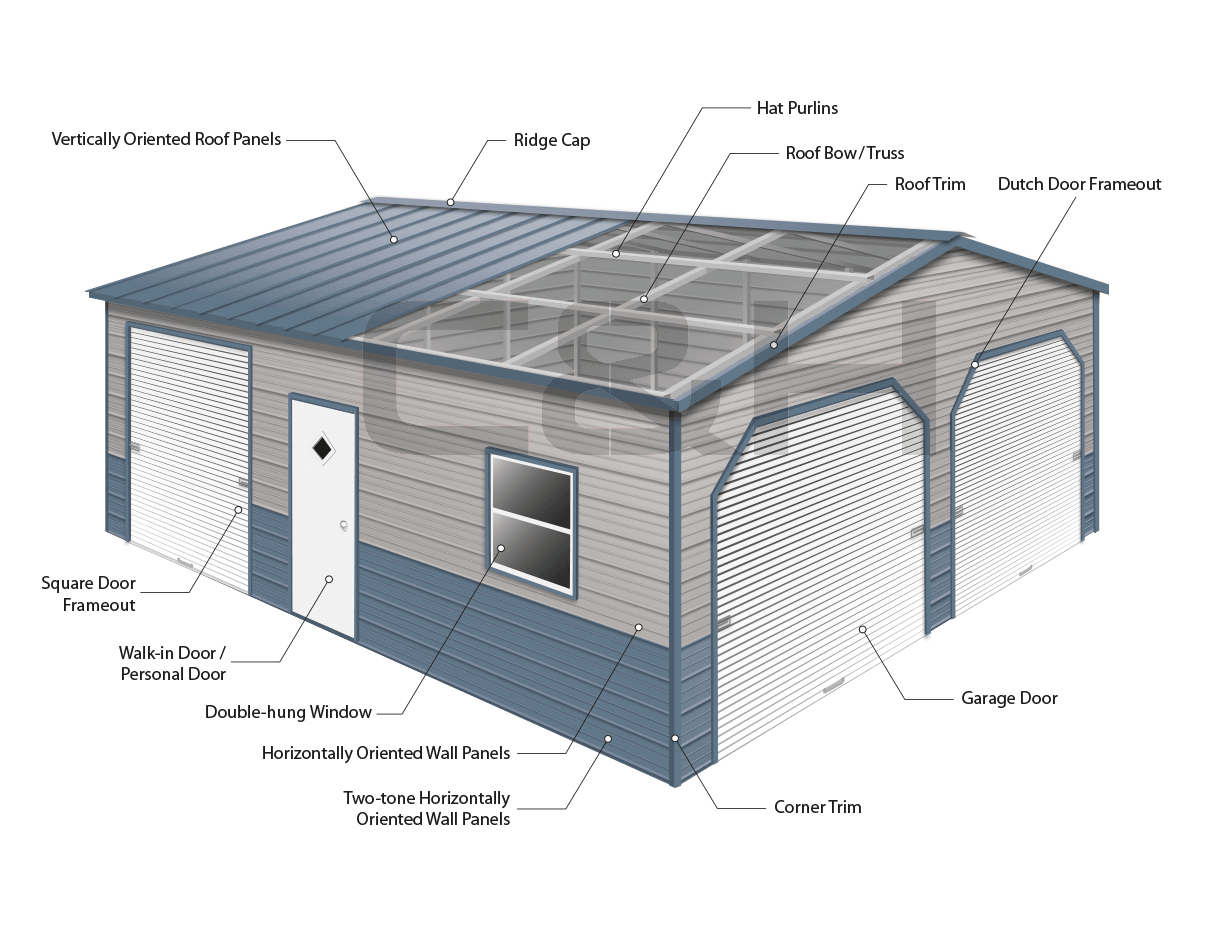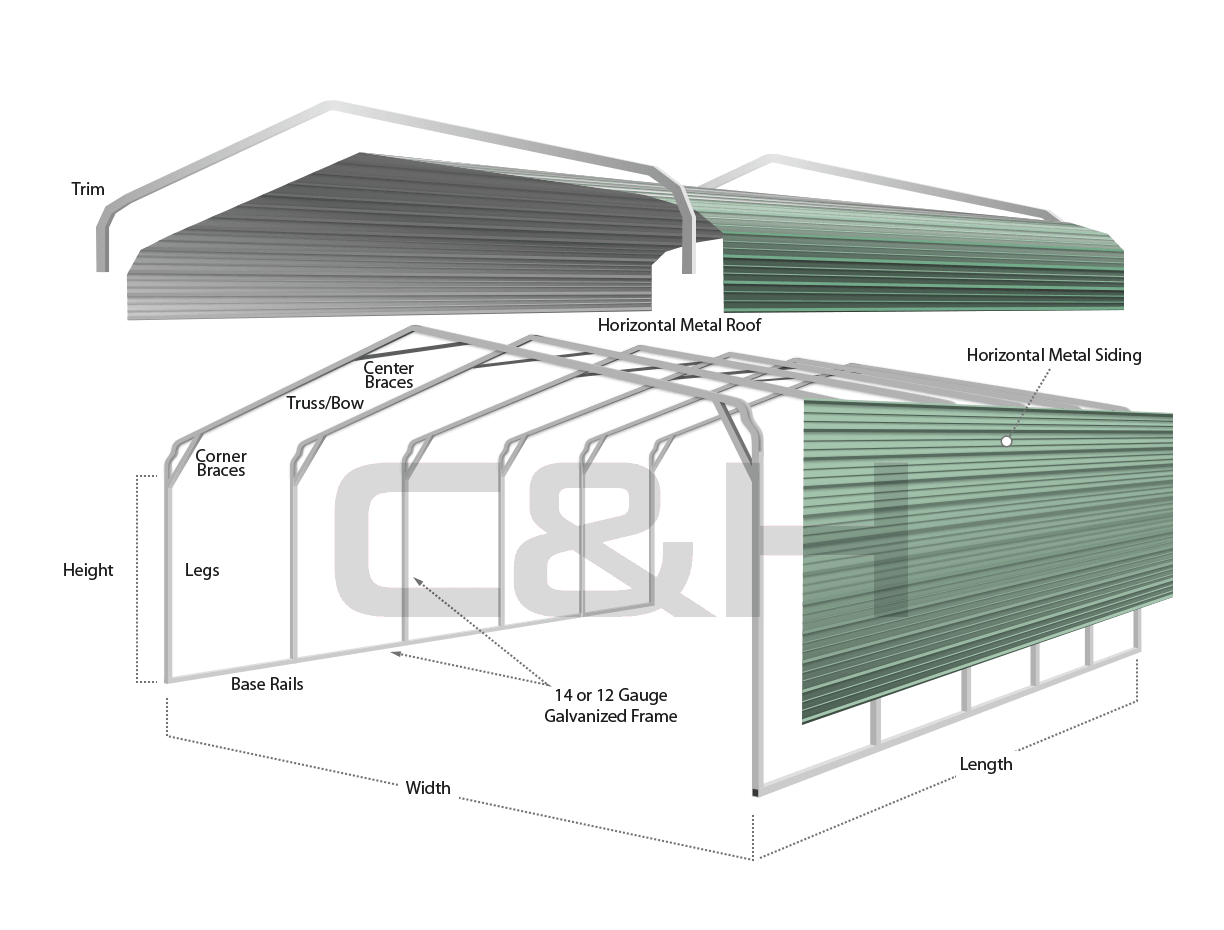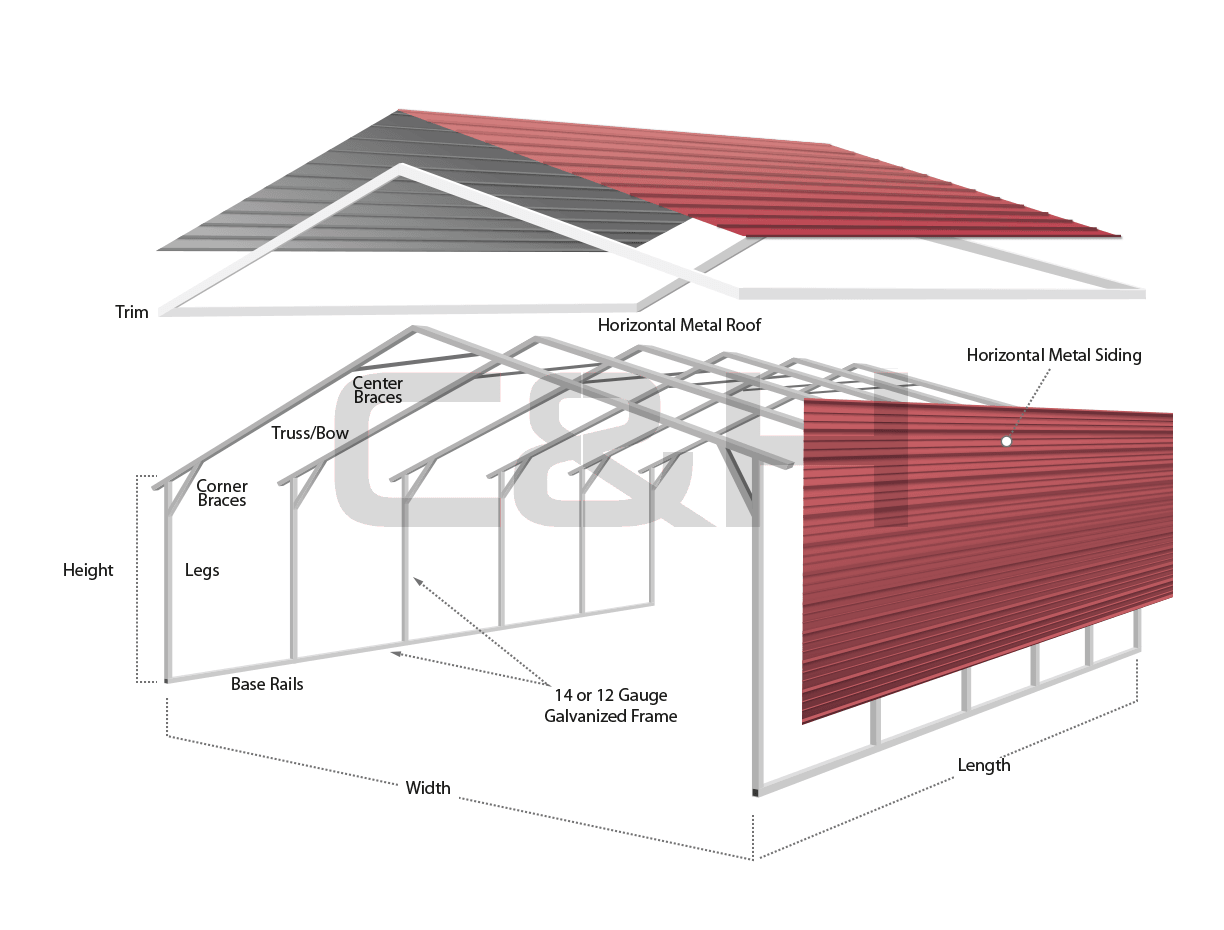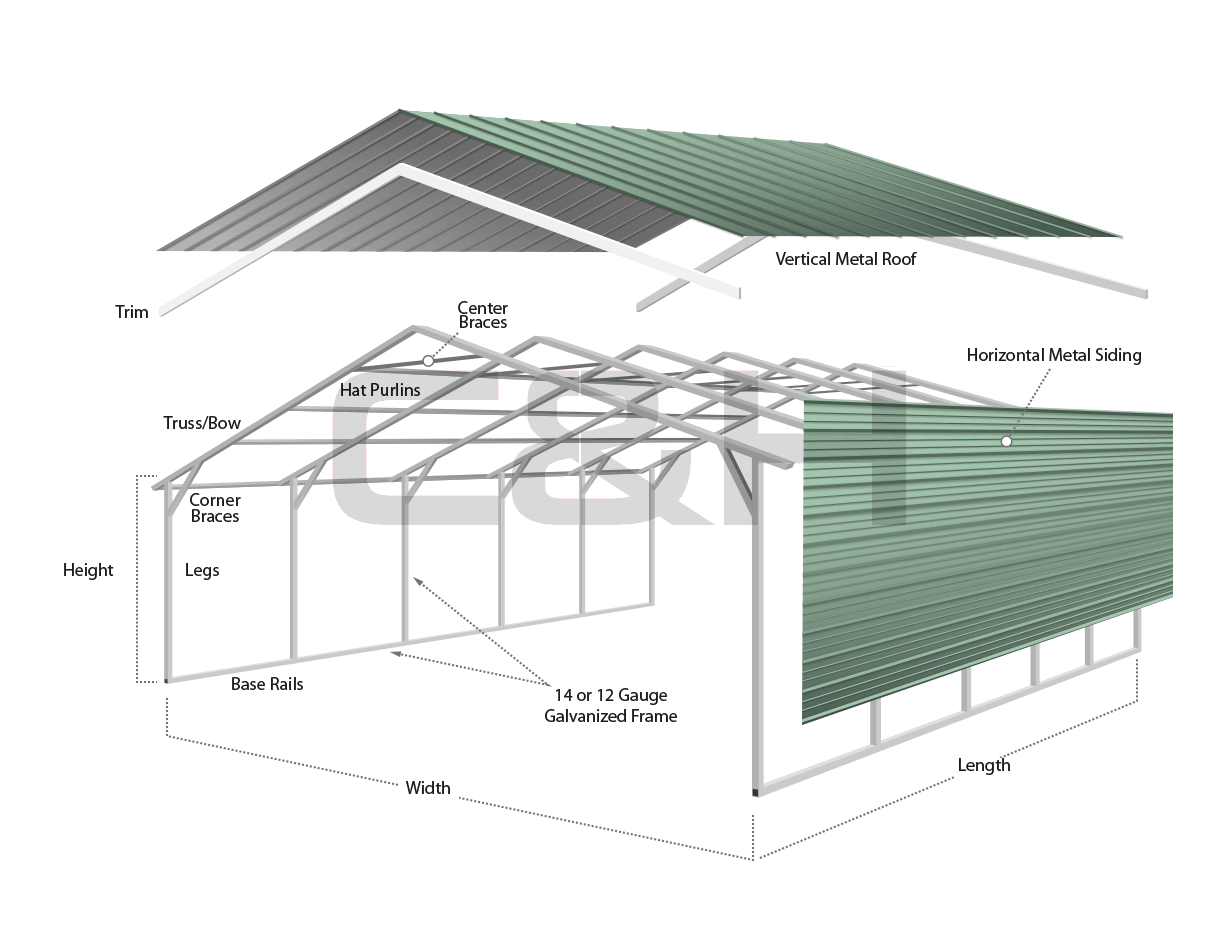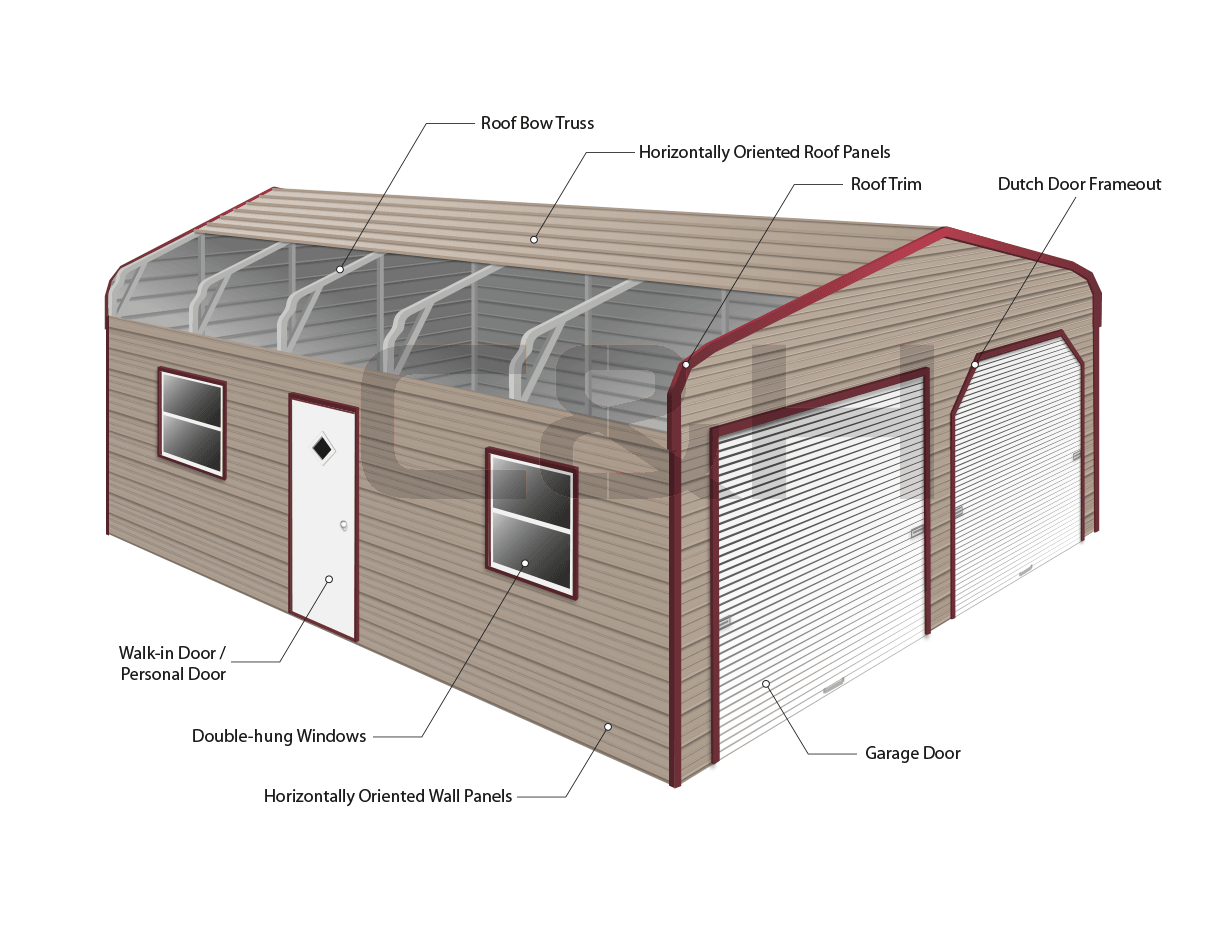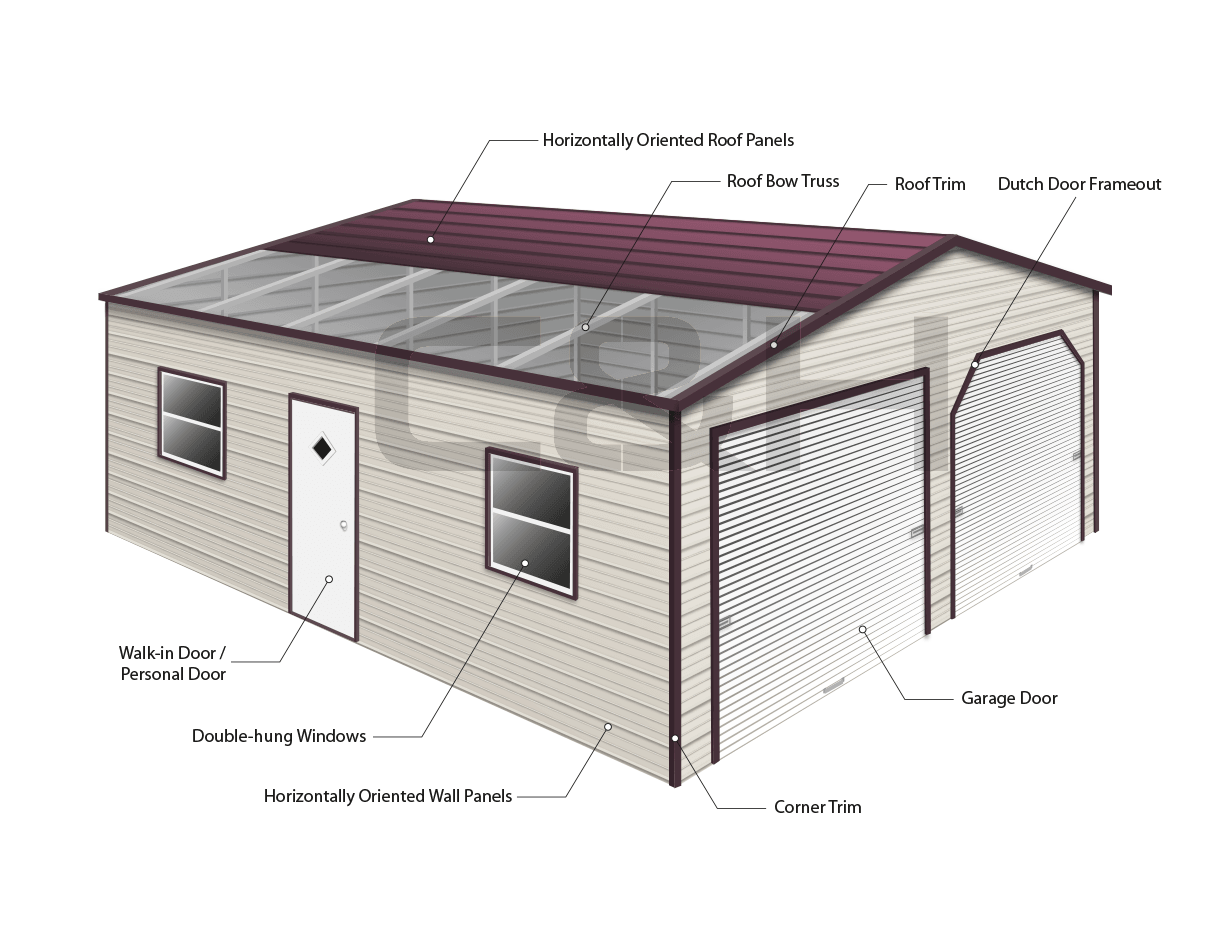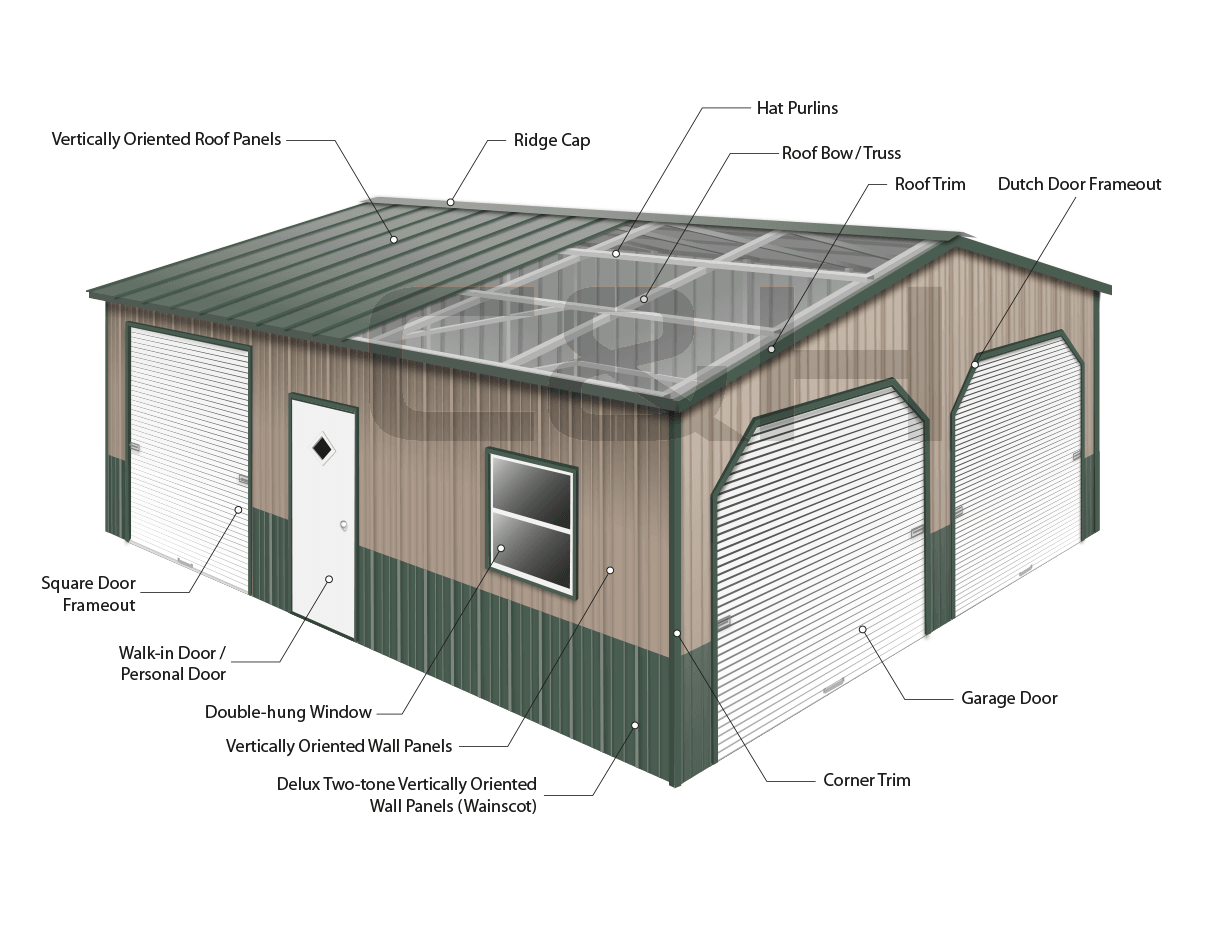Knowledgebase and Building Components
C & H Carports, Incorporated manufactures carports, garages, barns, and more. We offer three primary roof systems and a number of optional items for the units. Listed below is our knowledgebase and our three types roof systems for both carports and garages, as well as the components that go into each structure. Please click to enlarge each product's image for a detailed view and for more information.
Baserails
The square tubing at the bottom sides of the building to which the legs or posts are attached.
Bow
The bow is one continuous piece of square tubing that shapes and supports roof of the metal building.
Certified Building
Certified buildings are engineered by a professional engineer to meet specific wind and snow loads. This type of building is always used when building inspection departments specify that wind load and/or snow requirements. Stamped or raised seal plans are available at an extra charge if your building codes/inspection department requires them.
Concrete Anchors
The anchor are often referred to as concrete wedge anchors. Concrete anchors used are use in fastening structural and non=structural elements to the concrete pad, in order to secure the building to the surface.
Corner Braces (Leg Braces)
Corner braces are channel-shape steel members that reinforce the structure of the building. On all of our buildings, four 2 feet long leg braces come standard and they are installed on each corner of the building. We recommend the use of 2 feet long corner braces on each building leg (2 per bow). For buildings with legs that are taller than 8 feet, we provide 4 feet long corner braces on each leg of the building (2 per bow). If there are ends or gable ends on the building, braces and not needed nor are they installed on those pairs of legs.
Extended Gable Ends
Extended Gable Ends are framing and steel panels, installed horizontally or vertically, with the same shape as the bow of the building. They are usually up to one panel deeper than the standard gable end. They can be installed on either end of the building and they extend down, usually, up to three feet from the top of the legs up. Extended gable ends can be installed vertically at an additional cost.
Gable Ends
Gable Ends are framing and a steel panel, installed horizontally or vertically, with the same shape as the bow of the building. They can be installed on either end of the building and they extend from the 3 inches below the top of the legs, upward. Gable ends can be installed vertically at an additional cost.
Garage Door
Our garage doors are the roll-up doors. As the door is raised, they retract into a cylinder or barrel shape above the door opening. We offer a variety of sizes up to 12′ x 12′. Please note there are no windows in our garage doors and they are only available in white.
Gauge
Gauge refers to the thickness of the panels and tubular framing used on the buildings. The lower the gauge, the thicker and stronger the metal.
Hat Channel
Sometimes referred to as purlins, hat channel is used on carports and garages with vertical roof systems. It supports the vertically oriented panels on those systems.
Header
Headers are placed at the top of the garage door frame when a door opening is requested, whether it is an opening with or without a door (walk-in or garage) is installed. Special headers are used on the side walls when a garage door or framed opening is wider than the post spacing. Since the load bearing walls are always on the side walls of our units, those special headers carry the roof load of the structure.
J-Trim
J-trim is used as an optional trim on the bottom edge of side paneling on the sides of carports to provide a finished appearance.
L-Trim
L-trim is used as trim on the ends of the panels of carports to provide a finished look. L-trim is also used one the exterior corners of garages.
Lag Bolts as Anchors
Lag bolts/screws are used to secure structural on non-structural base rail to a wood surface. Units that are installed on a wood foundation or deck cannot be engineer certified.
Legs
Legs are the vertical square tubing posts that connect the bows or trusses (top) to the base rail (bottom).
Mobile Home Anchors
Mobile home anchors are auger-type tie-downs that are used to securing the building to the graound where concrete is the installation surface. There two discs at the lower end of the anchor are helical in design. They are supplied with certified structures installed on the ground. They can be installed as an option on non-certified structures with ground installation, at an additional charge.
Non-Certified Structure
Non-certified structures are commonly used where building permits are not required or where engineered wind and snow loads aren’t specified. For best results and performance, we always recommend and engineer certified structure.
Panels
Our standard panels are 29 gauge corrugated steel. They are 3′ wide and they are available in standard lengths of 21′, 26′, 31′, and 36′. We offer 14 different colors.
Center Braces or Peak Braces
Center braces or peak braces are steel channels that are installed at the center of the bow all structures to reinforce the roof.
Peak Height
Peak high refers to the height from the surface to the to the highest point (apex) of the building.
Rebar Anchors
Rebar is a common steel reinforcing rod. Our rebar anchors are made from this reinforcing bar and they are 1/2″ x 32″ long. They have a 5/8″ nut welded onto one end. They are installed through a hole drilled into the base rail and they secure the building in both ground and asphalt, non-certified installations.
Ridge Cap
Ridge cap is a piece of metal that sits on the ridge of the roof on all vertical roof units. Its function is to cover the seam where the roof panels meet at the apex of the building.
Roof Styles
We offer three roof styles. Vertical roof, A-Frame, and regular The differences are described below:
Truss
A truss is a triangular shaped frame that is made of steel and they are stronger than a bow. They are standard on buildings larger than 24′ wide. Trusses are optional on buildings that are 24′ wide and less.
Tubing
The tubing forms the frames of our structures. We offer as standard the 14 gauge 2-1/2″ x 2-1/2″ square tubing. As an option, our buildings can be constructed with a stronger 12 gauge 2-1/4″ x 2-1/4″ square tubing, at an additional charge.
Walk-in doors
Our optional walk in doors are 32″ Wide x 72″ High or 36″ Wide x 80″ High and they have a 9″ x 9″ diamond-shaped window. All walk-in doors are white. You may choose to have a walk-in door without a window at no additional charge.
Windows
Our optional windows are 30″ x 30″ and we offer them with and without grids
End Walls
End Walls are used to close the Metal Buildings Ends (Front walls and Back walls). Galvanized Steel Framing and Painted Corrugated Steel Panels are used to make it strong and durable enough to stand.
VERTICAL ROOF GARAGE WITH HORIZONTAL SIDE AND END PANELS
